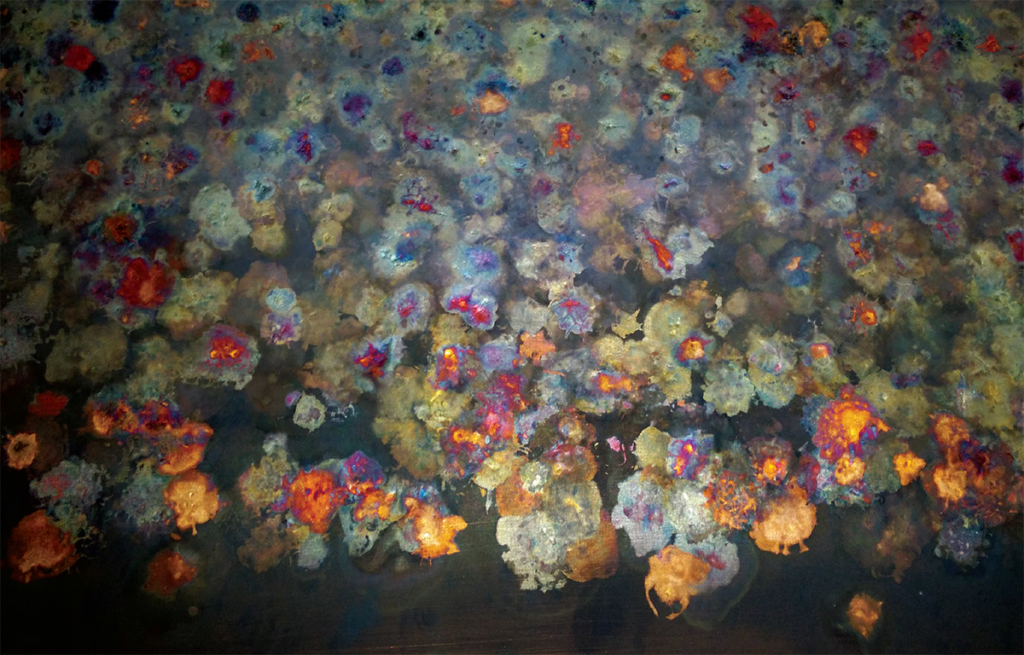Founded 80 years ago, the French National Centre for Scientific Research (CNRS) is one of Europe’s largest research institutions. Ursula Bassler and Denis Guthleben look back at its history and achievements in nuclear and high-energy physics.
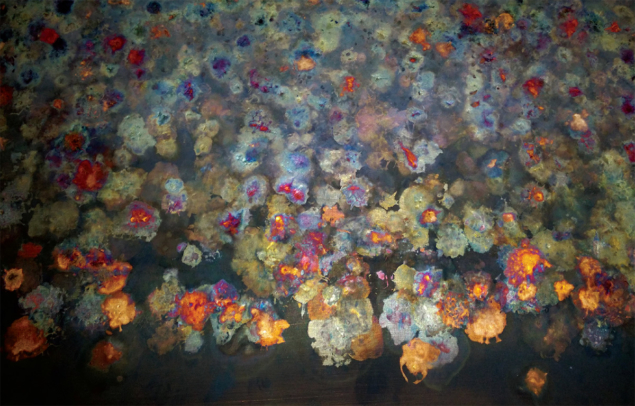
Marie Curie once described the laboratory she shared with her husband Pierre as “just a clapboard hut with an asphalt floor and glass roof giving incomplete protection against the rain, without any amenities”. Even her colleagues abroad were shocked by their paltry resources. German chemist Wilhelm Ostwald noted: “The laboratory was a cross between a stable and a potato shed, and if it hadn’t been for the chemical apparatus, I would have thought it a practical joke.” In the 1920s, newspapers showed the desperate situation the French laboratories were in. “There are some in attics, others in cellars, others in the open air…” the Petit Journal newspaper reported in 1921. Increasing research funding to elevate France to the level of countries like Germany became a rallying point for the nation.
In the inter-war years, Jean Perrin, winner of the 1926 Nobel Prize in Physics for his work showing the existence of atoms, championed the development of science and had the support of many other scientists. Thanks to financial support from the Rothschild Foundation, he founded the Institute of Physico-Chemical Biology, the first place to employ researchers full-time. In 1935 he managed to get the National Scientific Research Fund set up to fund academic projects and research fellowships. One of its first fellows was the young Lew Kowarski in 1937, who had joined Frédéric Joliot-Curie’s laboratory at the Collège de France. In May 1939, together with Hans von Halban, they filed patents via the fund that outlined the production of nuclear power and the principle of the atomic bomb.
Around 32,000 people currently work at CNRS in collaboration with universities, private laboratories and other organisations
A new government under Léon Blum took office in 1936, and with it came the appointment of France’s first under-secretary of state for scientific research. Another first was the inclusion of three women in the government at a time when women still did not have the vote in France. Irène Joliot-Curie took up her post for three months in support of women’s rights and scientific research. During this short period, she set out major objectives: an increase in research budgets, salaries and grants for research fellows.
After her resignation, Perrin took over. This sexagenarian with the appearance of a dishevelled scientist “immediately showed the ardour of a young man and the enthusiasm of a beginner, not for the prestige, but for the means of action the post provided”, Jean Zay, the very young minister of national education at the time, noted in his memoirs. Over the next four years, his achievements included the opening of laboratories such as the Paris Institute of Astrophysics and culminated in the decree founding CNRS, published in October 1939. Six weeks after the outbreak of the Second World War, Perrin announced: “Science is not possible without freedom of thought, and freedom of thought cannot exist without freedom of conscience. You cannot require chemistry to be Marxist and expect to produce great chemists; you cannot require physics to be 100% Aryan and expect to keep the greatest physicists in your country… Each of us can die, but we want our ideals to live on.”
The founding principle of the CNRS “to identify and conduct, alone or with its partners, every type of research in the interest of science and the technological, social and cultural advancement of the country” stands strong today. Around 32,000 people, including 11,000 academics and researchers, currently work at CNRS in collaboration with universities, private laboratories and other organisations. Most of the 1100 CNRS laboratories are co-directed with a partner institution and host CNRS personnel and, in the majority of cases, faculties and academics. These “mixed research units”, which were introduced in 1966, form the backbone of French research and allow cutting-edge research to be done whilst being rooted in teaching and contact with students.
The evolution of nuclear and high-energy physics
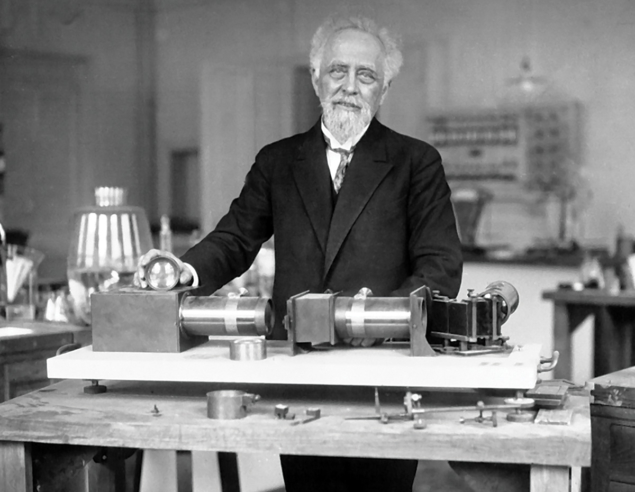
Under the auspices of the national ministry of higher education, research and innovation, CNRS is France’s largest research institution. With an annual budget of €3.4 billion, it covers the whole gamut of scientific disciplines, from the humanities to natural and life sciences, the science of matter and the universe, and from fundamental to applied research. The disciplines are organised thematically into 10 institutes, which manage the scientific programmes and a significant share of the investment in research infrastructure. CNRS plays a coordination role, particularly through its three national institutes, the National Institute of Nuclear and Particle Physics (IN2P3), together with the National Institute of Sciences of the Universe and the National Institute for Mathematical Sciences and their Interactions.
When CNRS was founded, French physicists were among the world-leading: Irène and Frédéric Joliot-Curie, Jean Perrin, Louis de Broglie and Pierre Auger are among the names that have entered the history books from this time. Frédéric Joliot-Curie’s laboratory at the Collège de France played a crucial role thanks to its cyclotron, as did Irène Joliot-Curie’s Radium Institute, Louis Leprince-Ringuet’s laboratory at the École polytechnique and Jean Thibaud’s in Lyon. The newly established CNRS put up the funds for facilities, research fellows, technical personnel and chairs of nuclear physics at universities and the elite Grandes Écoles. The war broke out the same year CNRS was founded, bringing everything to a halt: researchers either went into exile or tried to continue running their laboratories in inevitable isolation.
Frédéric Joliot-Curie, buoyed by his involvement in the Resistance, took up the reins of CNRS in August 1944 and strove to help France catch up again after the war, particularly in nuclear physics. After atomic bombs were dropped on Hiroshima and Nagasaki, General de Gaulle asked Frédéric Joliot-Curie and Raoul Dautry, who was minister for reconstruction and urbanism, to set up the Commissariat à l’Energie Atomique (CEA). Frédéric Joliot- Curie saw this organisation as a means of bringing together and coordinating all fundamental research in nuclear physics, including research undertaken in university laboratories. From 1946, all the big names – Auger, Joliot-Curie, Perrin and Kowarski – joined CEA. CNRS was therefore not greatly involved in this area. In 1947 the decision was taken to build a facility in Saclay combining fundamental and applied research. André Berthelot was the director of the nuclear physics division at Saclay and installed several accelerators there.
Founding CERN
In the 1950s French physicists played a key role in the establishment of CERN: Louis de Broglie, the first well-known scientist to call for the creation of a multinational laboratory; Auger, who was director of the department of exact and natural sciences at UNESCO; Dautry, director-general of CEA; Perrin, the high commissioner; and Kowarski, one of CERN’s first staff members who later became director of scientific and technical services. He is credited with the construction of the first bubble chamber at CERN and the introduction of computers. Joliot-Curie, relieved of his duties at CEA owing to his political beliefs, was very upset not to be appointed to the CERN Council – unlike Perrin, who succeeded him at CEA. Alive to CERN’s potential, Louis Leprince-Ringuet shifted the focus of his teams’ research from cosmic rays to accelerators. He became the first French chair of the scientific policy committee (SPC) in 1964 and his laboratory contributed greatly to the involvement of French physicists at CERN.
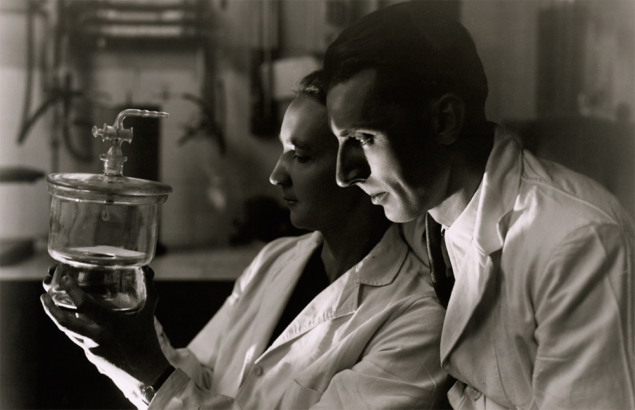
Another CNRS recruit of the post-war period who also made a name for himself at CERN was Georges Charpak. Securing a research position at CNRS in 1948, he wrote his thesis under the supervision of Frédéric Joliot-Curie, who had wanted to nudge Charpak towards nuclear physics. But he picked his own area: detectors. He was hired at CERN by Leon Lederman in 1963 and went on to develop the multiwire proportional chamber, which replaced bubble chambers and spark chambers by enabling digital processing of the data. The invention won him the 1992 Nobel Prize in Physics.
When he returned to the Collège de France, Frédéric Joliot-Curie joined forces with Irène to create the Orsay campus. Given the prospect of new facilities at CERN, they felt that France needed to develop its own infrastructure to enable French physicists to train and prepare their experiments for CERN. “Helping to create and sustain CERN whilst letting fundamental nuclear-physics research fizzle out in France would be to act against the interests of our country and those of science,” Irène Joliot-Curie wrote in Le Monde. The government under Pierre Mendès France made research a priority and in 1954 granted funds for the construction of two accelerators, a synchrocyclotron at Irène Joliot-Curie’s Radium Institute and a linear accelerator for Yves Rocard’s Physics Laboratory at the École normale supérieure. Irène Joliot-Curie secured the plots required in Orsay for the construction of the Orsay Institute of Nuclear Physics (IPNO) and the Linear Accelerator Laboratory (LAL). Irène Joliot-Curie did not live to see the new laboratory, but Frédéric Joliot-Curie became the IPNO’s first director, while Hans Halban was called back from England to manage LAL. These two emblematic institutes still play a major role in French contributions to CERN.
From strength to strength
During the 1950s and 1960s CNRS went from strength to strength and set up more laboratories for high-energy and nuclear physics. A Cockroft-Walton accelerator, built in Strasbourg by the Germans during the war, was the seed that grew into the Nuclear Research Centre directed by Serge Gorodetsky. Maurice Scherer’s chair in nuclear physics in Caen, created in 1947, evolved into the Corpuscular Physics Laboratory. One of its first doctoral students, Louis Avan, founded the eponymous laboratory in Clermont-Ferrand in 1959. Louis Néel laid the foundations for important physics research in Grenoble, and CEA set up a centre for nuclear studies there in 1956. The Franco-German research reactor was built at the “Institut Laue-Langevin” in Grenoble in 1967. In the same year, the Grenoble Nuclear Science Institute was established, hosting a cyclotron used in particular for the production of radioisotopes for medicine. Its director, Jean Yoccoz, later became a director of IN2P3. The Centre of Nuclear Studies of Bordeaux-Gradignan was established in a disused Bordeaux château in 1969.
The physicists at these laboratories played an active role in CERN experiments, thanks in particular to the flexible secondment policy at CNRS. Among them was Bernard Gregory, who worked at Leprince-Ringuet’s laboratory and focused on the construction of a large, 81 cm liquid-hydrogen bubble chamber in Saclay in preparation for the impending commissioning of the Proton Synchrotron (PS) at CERN. It produced more than 10 million pictures of particle interactions, which were shared all over Europe. In 1965 Gregory became the Director-General of CERN. Five years later, he replaced Louis Leprince-Ringuet as the head of the École polytechnique laboratory, and then became director general of CNRS. He was elected President of the CERN Council in 1977.
Managing expansion
In the 1960s research facilities were becoming so large that the idea came about within CNRS to create national institutes to coordinate the laboratories’ resources and programmes. LAL director André Blanc-Lapierre campaigned for a National Institute of Nuclear and Particle Physics, following the example of the Italian INFN founded in 1951. The aim was to organise the funding allocated to the various laboratories by CNRS, the universities and CEA. Discussions between the partners then began.
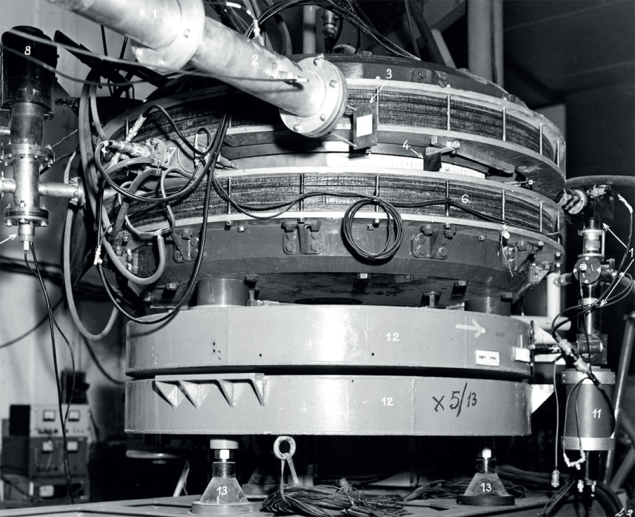
In parallel, French physicists were engaged in another debate. After the construction of the 3 GeV proton accelerator SATURNE at CEA in Saclay in 1958 and the 1.3 GeV electron linear accelerator at LAL in Orsay in 1962, as well as the later ACO collider at ALA in Orsay, opinions were divided about building a national machine that would complement CERN’s experimental capabilities and strengthen the French scientific community. Two options were in the running: a proton machine and an electron machine. This decision was especially important since other machines were springing up elsewhere in Europe. In Italy, the electron–positron collider AdA was followed by ADONE in 1969. In Hamburg, Germany, the electron synchrotron DESY was commissioned in 1964.
France’s priority, however, was construction at the European level with CERN, so neither of the two proposed projects ever got off the ground. Jean Teillac, who succeeded Frédéric Joliot-Curie as head of the IPNO, founded IN2P3 in 1971, federating the laboratories and the universities of CNRS. It was only later, in 1975, that CEA and IN2P3 decided to collaborate in building a national machine in Caen, the Large Heavy Ion National Accelerator (“Grand Accélérateur National d’Ions Lourds”, GANIL), which specialised in nuclear physics. Despite the fact that the CEA laboratories involved were not part of IN2P3, the physicists of the two organisations collaborated extensively.
In this context, André Lagarrigue, who had been the director of LAL since 1969, proposed the construction of a new bubble chamber, Gargamelle, on a neutrino beam at CERN. The scientist had previously investigated the feasibility of bubble chambers containing heavy liquids that would favour interactions with neutrinos instead of hydrogen at the École polytechnique. After its construction at Saclay, the chamber filled with liquid freon was installed at CERN and detected neutral currents in 1973. This was a major discovery, which certainly would have won Lagarrigue a Nobel prize had he not died of a heart attack in 1975.
Then to now
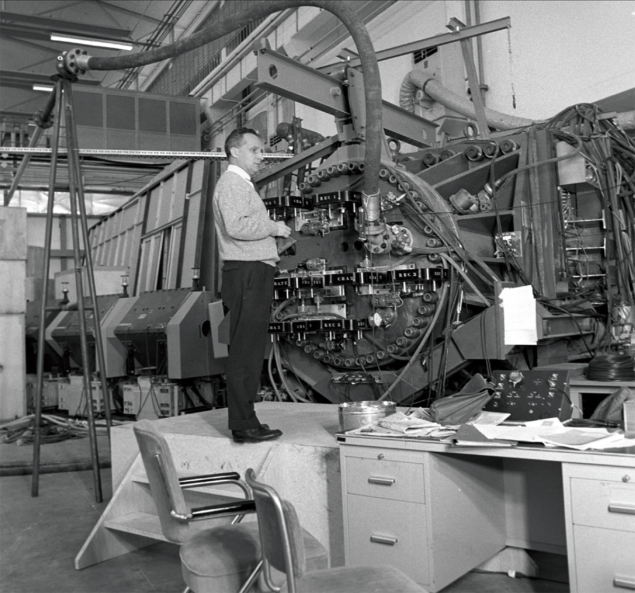
Today, IN2P3 has around 20 laboratories and some 3200 staff, including 1000 academics and researchers in nuclear physics, particle physics, astroparticle physics and cosmology. The institute contributes to the development of accelerators, detectors and observation instruments and their applications to societal needs. Its data centre in Lyon plays an important role in processing and storing large volumes of data, as well as housing the digital infrastructure for other disciplines.
IN2P3 has had strong links with CERN through many projects and experiments. These include: the discovery of the W and Z bosons by UA1 and UA2; contributions to ALEPH, DELPHI and L3 at LEP; the discovery of the Higgs boson by ATLAS and CMS at the LHC; flavour studies at LHCb and heavy-ion physics at ALICE; neutrino physics; CP violation; antimatter experiments, as well as nuclear physics. These joint ventures also involve other CNRS institutes like the INP (Institute of Physics), with its specialists in quantum physics and lasers, as well as in strong magnetic fields.
Future CERN projects are currently being discussed in the update of the European strategy for particle physics. They offer the prospect of new collaborations between CERN and CNRS in high-energy physics, but also in engineering, computing, biomedical applications and even the humanities and social sciences. No doubt the synergy between these two organisations, with their exceptionally rich scientific knowledge, will continue to give birth to exciting new research.
- A French version of this article is available here.



